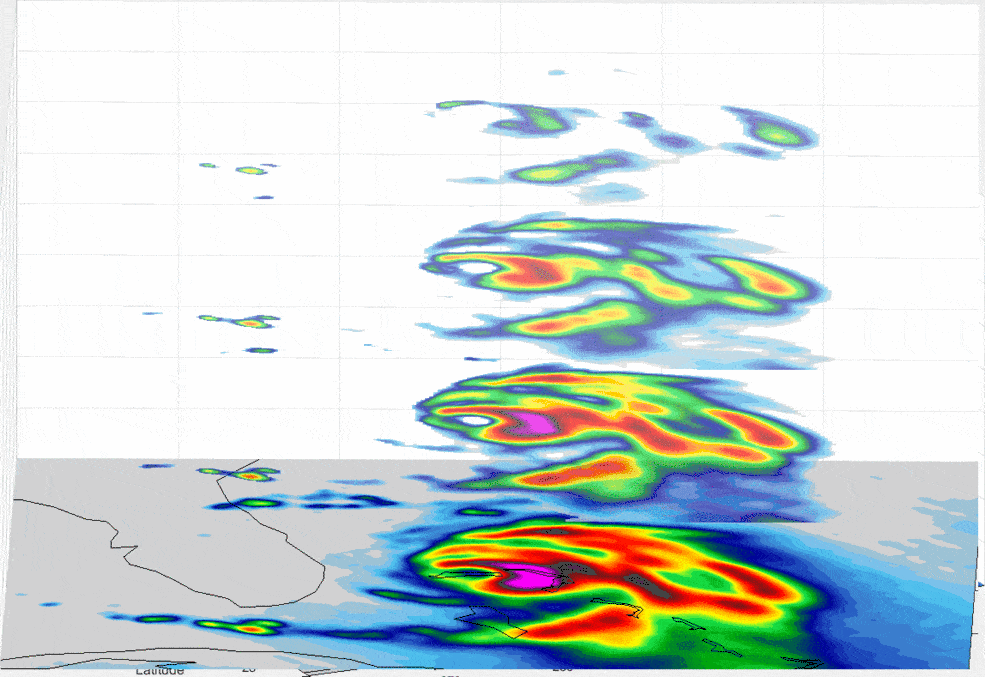A small NASA satellite offers important insight about the structure of the storm and its different layers.

TEMPEST-D is no larger than a cereal box, and it’s inexpensive to boot — but its capability is remarkable. Above is a visualization of Hurricane Dorian, taken by TEMPEST-D at four depths (with four different radio wavelengths). The colors depict the heaviest rainfall inside the storm: pink and red are the most intense, whereas green and blue are the least intense. Essentially, the multiple vertical layers in the image above show where the strongest convective “storms” within the hurricane are moving into the atmosphere and can be used to study and predict the development of such storms.
After ravaging the Bahamas and causing unprecedented damage, Dorian seemed to dip in strength, but ramped back to a Category 3 hurricane as it struck the North and South Carolina coasts on Thursday. Its evolution came as a bit of a surprise, and the storm remains dangerous.
The unusual visualization can prove valuable exact in this sort of situation. The TEMPEST-D technology is essentially a radio wave instrument capable of measuring rain and moisture within the clouds with remarkable accuracy — on a low-cost, short development schedule. If it can track storms like Dorian (and early results suggest that it can), it could lead to a revolution in how we monitor such storms.

By measuring the evolution of clouds from the moment of the onset of precipitation, a satellite constellation could reveal the ongoing cloud processes and help constrain the largest source of uncertainty in weather models (this could also be an important input larger-scale climate models).
A fleet of such satellites could be used to tracks storms all around the world, at a fraction of the cost of traditional satellites. This would improve our coverage of global storms, as well as generate more accurate forecasts.



